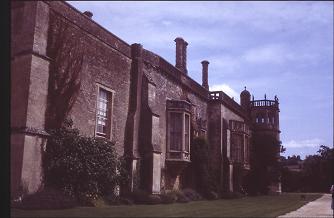- Simulation
- motif and background, movement
see Addison (1712) and the camera obscura (next lesson): it reproduces objects moving against a background
He invented one of the forms of photography - the 'calotype', based on the 'negative' process -, which freezes a moment of time, out of a desire to keep memories of constantly moving phenomena. He recollects that, while on the shore of Lake Como in 1833, he looked at the images formed by his camera obscura, creations of a moment, and destined as rapidly to fade away' (The Pencil of Nature, published 1844-46), wishing to keep traces of them, which led to his invention of photography. So what we know as still images' were discovered in an attempt to record fleeting images.
In his Legendary Tales (1830), he had already taken up the motifs of images which are occasionally animated: magic mirrors, statues which might come to life, in a story precisely set on the shores of Lake Como.

The window at Lacock from which Fox Talbot took the first negative.
His work, including his first photo -a view from the window of his house Lacock Abbey in Wiltshire- is documented on the website on the history of photography ; the negative is now at the National Media Museum at Bradford.
- Texture:
- Engraving, aquatint and atmosphere
Aquatint was invented in the 18th century so as to emphasise the atmospheric effects (see later lesson).
- Pattern-making through colours
see the V&A animation on William Morris wallpaper (1874): patterns emerge through a superimposition of sheets of different colours.So the motifs appear as intersections of several patterns, after all the colours have been placed.
On aquatint, see a website on printmaking techniques
On William Morris wallpaper, see the Victoria and Albert website Collections: Paintings & Drawings/Videos/Block-Printed Wallpaper